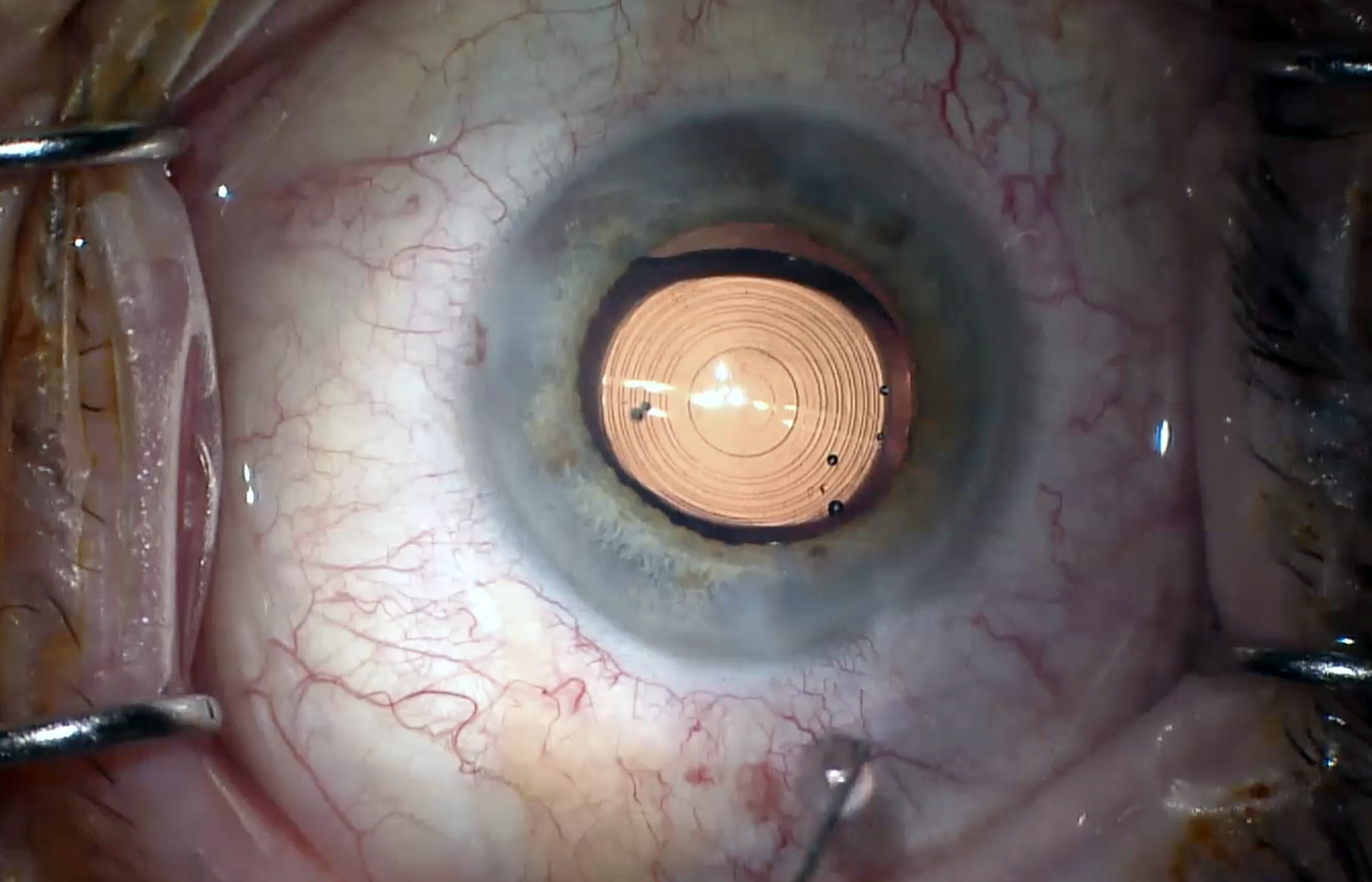 |
The AIOLIS Questionnaire could have clinical utility as a standardized tool for assessing patient-reported visual perceptions and symptoms after IOL implantation, particularly in those who opt for multifocal designs. Photo: Ethan Zimmerman, OD. Click image to enlarge. |
Following intraocular lens (IOL) implantation, many patients—especially those who receive premium multifocal IOLs—experience adverse visual events including glare, halos and loss of contrast sensitivity. To add rigor to the assessment of these patients’ post-op experience, researchers recently designed a questionnaire that could serve as a standardized, patient-reported outcome measure of visual perceptions and symptoms for both premium and monofocal IOLs. The effort was undertaken at the behest of the American Academy of Ophthalmology and the FDA.
In two reports published last week in the Ophthalmology journal, the team—which includes several high-profile cataract surgeons as well as a medical officer of the FDA’s Center for Devices and Radiological Health—detailed the development and clinical value of their survey document.
The group of experts first conducted 13 focus groups and then 19 cognitive interviews to fine-tune queries and response options to be used in the questionnaire. The resulting 37-item survey, named the Assessment of IntraOcular Lens Implant Symptoms (AIOLIS) Questionnaire, was administered to a group of patients with varying types of IOLs before and after surgery (716 and 554 patients completed the survey pre- and post-op, respectively).1 The first 30 questions assessed the frequency and bother of ocular symptoms in the last seven days, followed by six general vision questions and one about the frequency of spectacle or contact lens wear.
Table 1. IOL Symptoms Assessed by AIOLIS
|
Table 1 details the 14 symptoms asked about in the questionnaire. A definition and photo example preceded each question to illustrate how each visual symptom may appear from the patient’s perspective.
Here’s an example of how the survey phrases the questions about each symptom:
In the last seven days, how often did you notice any glare during the day—such as loss of contrast and unwanted light from many or all directions?
- Never
- Sometimes
- Usually
- Always
How much were you bothered by the glare during the day in the last seven days?
- Not at all
- A little
- Somewhat
- Quite a bit
- Extremely
The last portion of the questionnaire asked patients to rate their vision as poor, fair, good or excellent and rate how satisfied they are with their current vision. Patients were also prompted to rate their uncorrected distance and intermediate vision using the poor-to-excellent scale.
Mean uncorrected binocular visual acuity improved from 20/59 prior to surgery to 20/26 after. Best-corrected binocular visual acuity also improved pre- to postoperatively from 20/34 to 20/22.
The researchers reported that the following symptoms were reduced after surgery: pre-/postoperative glare (avg. pre-op: 84%; average post-op: 36%), blurry vision (68%/22%), starbursts (66%/28%), hazy vision (63%/18%), snowballs (55%/17%) and halos (52%/22%).1 A dark crescent-shaped shadow was the only symptom that didn’t significantly decrease from before to after surgery (4% both pre- and post-op). As for symptoms that patients rated as “quite a bit” or “extremely” bothersome, the percentage of all decreased after surgery except for dark crescent-shaped shadows (29%/32%): blurry vision (54%/15%), snowballs (52%/14%), glare (49%/15%) and halos (46%/14%).1
The percentage of patients who rated their near vision as good, very good or excellent increased from 15% preoperatively to 38% post-op. For distance vision, the increase was much more substantial: from 15% pre-op to 85% post-op. “After surgical correction, 84% reported that they were somewhat, very or completely satisfied with their vision,” the researchers reported in their article. “Most patients (88%) reported that they could see pretty well, very well or perfectly well without corrective lenses and used correction only for reading after surgery.”2
When the researchers compared the survey results of patients with multifocal vs. monofocal IOLs, they observed that “having monofocal IOL implants was associated with significantly more reduction in halos, starbursts, glare, and rings and spider webs but less improvement in self-reported general vision.”1 There was a greater postoperative reduction of halos for the patients with monofocal (36%) vs. multifocal (20%) IOLs. Interestingly, however, general satisfaction with vision was higher postoperatively in multifocal IOL patients (73% vs. 67%).2
The researchers concluded that the AIOLIS questionnaire “makes it possible for clinicians, regulators and manufacturers to understand patients’ perceptions and adaptation to a variety of contemporary IOL designs.”1 It also “illuminates which symptoms are bothersome and the extent of their effect on patients’ visual function and activities of daily living.”2 Since the AIOLIS includes questions on a broader range of symptoms than other patient-reported outcomes measures like the Questionnaire for Visual Disturbances, the researchers suggested that a head-to-head comparison study is needed.
1. Hays RD, MacRae S, Holladay J, et al. Development of a patient-reported outcome measure to assess symptoms associated with cataract surgery and intraocular lens implants. Ophthalmology. April 12, 2023. [Epub ahead of print]. 2. Masket S, Lum F, MacRae S, et al. Symptoms and satisfaction levels associated with intraocular lens implants in the monofocal and premium IOL patient-reported outcome measure study. Ophthalmology. April 15, 2023. [Epub ahead of print]. |

